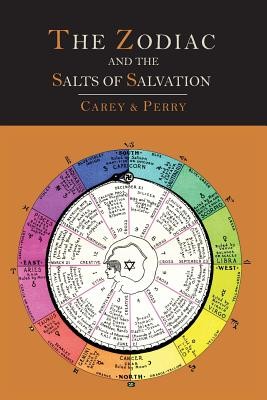
- We will send in 10–14 business days.
- Author: George W Carey
- Publisher: Martino Fine Books
- ISBN-10: 1614274231
- ISBN-13: 9781614274230
- Format: 15.2 x 22.9 x 2 cm, minkšti viršeliai
- Language: English
- SAVE -10% with code: EXTRA
Reviews
Description
2013 Reprint of 1932 Edition. Exact facsimile of the original edition, not reproduced with Optical Recognition Software. Color reproduction of Frontispiece. George Washington Carey (1845-1924) was an American physician known for a number of 1910s 'Chemistry of Life' publications, a subject which he referred to as biochemistry, particularly his 1919 "The Chemistry of Human Life". Carey combined a mixture of religion, astrology, physiology, anatomy, and chemistry, themed particularly with a mineral-based theory of human disease, to develop his theories. Carey is popular among the new-age and homeopathic circles. In the context of a person viewed as a "human molecule", Carey was the first to state that a person's body is a "chemical formula in operation." This title is divided into two parts. Part 1 is entitled the "Relation of the Mineral Salts of the Body to the Signs of the Zodiac", while Part 2 is an "Esoteric Analysis and Synthesis of the Zodiacal Signs and their Physiochemical Allocations". With the renewed interest in homeopathy, increased study of astrology and the entrance of the Aquarian Age, this book has gained more importance. It is an attempt to answer all the questions regarding the cell salts. Part 1 is a brief and concise outline of the 12 signs of the zodiac, their symbolism and the salts to be used to overcome any disease. Part 2 enlarges on Part 1 by discussing the physiochemical analysis, symbolism and actual use of each mineral salt.
- Author: George W Carey
- Publisher: Martino Fine Books
- ISBN-10: 1614274231
- ISBN-13: 9781614274230
- Format: 15.2 x 22.9 x 2 cm, minkšti viršeliai
- Language: English English
2013 Reprint of 1932 Edition. Exact facsimile of the original edition, not reproduced with Optical Recognition Software. Color reproduction of Frontispiece. George Washington Carey (1845-1924) was an American physician known for a number of 1910s 'Chemistry of Life' publications, a subject which he referred to as biochemistry, particularly his 1919 "The Chemistry of Human Life". Carey combined a mixture of religion, astrology, physiology, anatomy, and chemistry, themed particularly with a mineral-based theory of human disease, to develop his theories. Carey is popular among the new-age and homeopathic circles. In the context of a person viewed as a "human molecule", Carey was the first to state that a person's body is a "chemical formula in operation." This title is divided into two parts. Part 1 is entitled the "Relation of the Mineral Salts of the Body to the Signs of the Zodiac", while Part 2 is an "Esoteric Analysis and Synthesis of the Zodiacal Signs and their Physiochemical Allocations". With the renewed interest in homeopathy, increased study of astrology and the entrance of the Aquarian Age, this book has gained more importance. It is an attempt to answer all the questions regarding the cell salts. Part 1 is a brief and concise outline of the 12 signs of the zodiac, their symbolism and the salts to be used to overcome any disease. Part 2 enlarges on Part 1 by discussing the physiochemical analysis, symbolism and actual use of each mineral salt.


Reviews